ADDICTION
ALCOHOL DEPENDENCE
QUIT SMOKING
ALLERGY
ANTI FUNGAL
FUNGAL INFECTION
FUNGAL NAIL INFECTIONS
ANTI-REJECTION DRUGS
ANTI WORM
ANTIBIOTIC
BACTERIAL INFECTIONS
ARTHRITIS
GOUT
OSTEOARTHRITIS
RHEUMATOID ARTHRITIS
BLOOD
LOW PLATELET COUNT
THROMBOPHLEBITIS
VARICOSE VEINS
COLON
ANAL FISSURE
PILES
ULCERATIVE COLITIS
DIABETES CARE
DIABETES INSIPIDUS
DIABETES TYPE
DIABETIC FOOT ULCERS
GLUCOSE MONITOR
EYES/EAR CARE
DRY EYES
EYE CARE
EYE EXAMINATION
EYE INFECTION
EYE LASHES
EYE PAIN
GLAUCOMA
OCULAR HYPERTENSION
UVEITIS
FEVER CARE
MALARIA
RHEUMATIC FEVER
TYPHOID FEVER
GASTROINTESTINAL
ACIDITY
CONSTIPATION
CROHN'S DISEASE
DIARRHOEA
GALLBLADDER STONES
INTESTINAL ULCERS
IRRITABLE BOWEL SYNDROME
MOTION SICKNESS
NAUSEA
Tigi 50 mg (Tigecycline)
| Active Ingredient (Generic Name): | Tigecycline |
|---|---|
| Indication: | Serious bacterial infections |
| Manufacturer: | Glenmark Pharmaceuticals Ltd. |
| Packaging: | 5 ml in one vial |
| Strength: | 50 mg |
From: $31.00
You have been prescribed Tigi 50 mg, a glycylcycline antibiotic, to treat severe bacterial infections resistant to standard antibiotics. This medication targets aerobic and facultative Gram-positive and Gram-negative bacteria, addressing complex skin infections, intra-abdominal infections, and pneumonia. Tigi 50 mg works by inhibiting bacterial protein synthesis to halt bacterial growth. Your healthcare provider will oversee the treatment, typically starting with a 100 mg dose, followed by 50 mg every 12 hours for 5-14 days. It is crucial to be aware of the benefits, potential interactions, and side effects of Tigi 50 mg to ensure a safe and effective treatment.
Main Points
- Tigi 50 Mg is a glycylcycline antibiotic effective against severe bacterial infections, even those resistant to standard antibiotics.
- It functions by impeding bacterial protein synthesis, targeting growth, and deterring antibiotic resistance.
- This medication is typically prescribed for complex skin infections, intra-abdominal infections, and community-acquired bacterial pneumonia.
- Common adverse effects may include gastrointestinal issues, allergic reactions, and infrequent occurrences of blood disorders.
- Tigi 50 Mg has shown a higher mortality rate compared to other antibacterial drugs, particularly in patients with ventilator-associated pneumonia.
What Is Tigi 50 Mg?
Tigi 50 Mg is a glycylcycline antibiotic used to treat severe bacterial infections. It is effective against a wide range of bacteria, including aerobic and facultative Gram-positive and Gram-negative bacteria. Tigi 50 Mg is prescribed for complex skin infections, complicated intra-abdominal infections, and community-acquired bacterial pneumonia. It is important to follow the doctor’s instructions and complete the full treatment course to prevent antibiotic resistance. Understanding how Tigi 50 Mg works can help ensure successful treatment of the infection.
How Tigi 50 Mg Works
Understanding the mechanism of action of Tigi 50 Mg is essential. This antibiotic works by inhibiting protein translation in bacteria, causing their death. Through its antimicrobial activity, Tigi 50 Mg effectively fights a variety of bacterial infections.
Mechanism of Action
Tigi 50 Mg inhibits bacterial protein synthesis by binding to the 30S ribosomal subunit, an essential component in bacterial protein production. This binding prevents the initiation of protein synthesis, thereby blocking the formation of the 70S initiation complex. As a result, essential proteins required for bacterial growth and survival are not produced, leading to the inhibition of bacterial multiplication. This targeted mechanism specifically targets bacterial protein synthesis, minimizing the impact on human protein synthesis. By selectively inhibiting bacterial growth, Tigi 50 Mg effectively combats infections.
Antimicrobial Activity
Exploring the antimicrobial activity of Tigi 50 Mg reveals its effectiveness in combating bacterial infections. By binding to the 30S ribosomal subunit, Tigi 50 Mg disrupts bacterial protein synthesis, leading to the inhibition of bacterial growth. Key aspects of Tigi 50 Mg’s antimicrobial activity include broad-spectrum coverage against gram-positive, gram-negative, and anaerobic bacteria, low resistance rates due to its unique mechanism of action, and rapid bacteriostatic action that swiftly inhibits bacterial growth for a faster recovery from infections.
Uses of Tigi 50 Mg
Tigi 50 Mg is primarily indicated for the treatment of various bacterial infections, such as complicated skin and skin structure infections and complicated intra-abdominal infections. These infections can pose serious risks, particularly in individuals with compromised immune systems or underlying medical conditions. Tigi 50 Mg may be prescribed to address infections caused by susceptible bacteria, including methicillin-resistant Staphylococcus aureus (MRSA), Escherichia coli, and Klebsiella pneumoniae.
Besides treating skin and intra-abdominal infections, Tigi 50 Mg can also be used for community-acquired bacterial pneumonia. This antibiotic exhibits effectiveness against a wide range of bacteria, making it a valuable option for patients in need of prompt and efficient antibacterial treatment. It is essential to use Tigi 50 Mg only under the supervision of a healthcare provider to ensure that the treatment aligns with the specific infection and medical history of the individual.
Dosage and Administration
Before administering Tigi 50 Mg, it is essential to understand the recommended dosing and administration precautions. Review the dosage instructions carefully to ensure accurate use in terms of amount and frequency. Adhering to these guidelines can help reduce potential risks and optimize the effectiveness of this antibiotic.
Recommended Dosing
Initiate treatment with Tigi 50 mg (tigecycline) with an initial dose of 100 mg, followed by 50 mg every 12 hours. This dosing regimen is recommended for complicated intra-abdominal infections, community-acquired bacterial pneumonia, and complicated skin and skin structure infections. Adhere strictly to the dosing schedule:
- Initial dose: 100 mg as a single dose
- Maintenance dose: 50 mg every 12 hours
- Duration: Administer for 5-14 days based on infection severity and type.
Administration Precautions
Administer Tigi 50 mg (tigecycline) intravenously over a period of 30-60 minutes to reduce the risk of infusion reactions. This gradual infusion process helps to control the release of the medication into the bloodstream, lowering the chances of adverse effects. Prior to infusion, ensure the solution is clear and free of particles. If any visible particulate matter is detected, refrain from administering the solution.
Before commencing the infusion, examine the infusion site for any signs of inflammation, redness, or swelling. If such symptoms are present, consider using an alternative venous access site. Regularly monitor the infusion site throughout the process. Should an infusion reaction occur, halt the infusion immediately and seek medical assistance.
To prevent extravasation, verify that the infusion set is securely attached to the venous access device. Monitor the infusion rate closely and make adjustments as needed to prevent fluid overload. Adhering to these administration precautions will help minimize the risk of adverse reactions and ensure the safe and effective administration of Tigi 50 mg (tigecycline).
Side Effects of Tigi 50 Mg
Tigi 50 Mg, like other antibiotics, may cause a range of side effects, from mild to severe. It is important to be aware of these potential reactions for proper management. Common side effects of Tigi 50 Mg include gastrointestinal issues such as nausea, vomiting, diarrhea, and abdominal pain. Allergic reactions like itching, hives, or difficulty breathing can also occur. In rare cases, this medication may lead to blood disorders, affecting blood cell counts and causing conditions like anemia or low platelet count. Monitoring your body’s response and promptly reporting any unusual symptoms to your healthcare provider is crucial. Discussing your medical history and allergies can help reduce the risk of adverse reactions.
Tigi 50 Mg Interactions
When taking Tigi 50 Mg, it’s important to be cautious of potential interactions with other medications. Inform your healthcare provider about all current medications, including blood thinners like warfarin, as Tigi 50 Mg can increase the risk of bleeding. Avoid combining Tigi 50 Mg with drugs that may cause QT prolongation, such as certain antidepressants or anti-arrhythmics, to prevent cardiac arrhythmias. Additionally, Tigi 50 Mg may reduce the effectiveness of hormonal contraceptives, necessitating alternative birth control methods. Be mindful of medications metabolized by the liver, like some antibiotics or antifungals, as Tigi 50 Mg could require dose adjustments. By communicating openly with your healthcare provider about your medication regimen, you can mitigate the potential for adverse interactions and ensure the safe use of Tigi 50 Mg.
Warnings and Precautions
When considering the use of Tigi 50 Mg, it is essential to be aware of potential allergic reactions, which can be severe and life-threatening. Monitoring for signs of serious skin reactions is advised, as well as being mindful of the increased risk of mortality associated with Tigi 50 Mg.
Allergic Reactions Risk
Severe allergic reactions, including anaphylaxis, are a risk when taking Tigi 50 mg (tigecycline), particularly if you have a history of hypersensitivity to tetracycline-class antibiotics. Anaphylaxis is a life-threatening condition, so it’s crucial to recognize the signs of an allergic reaction:
- Hives or itchy skin: Red, itchy, swollen skin may indicate an allergic reaction.
- Swelling of the face, lips, tongue, or throat: Seek immediate medical attention if you experience these symptoms.
- Difficulty breathing or swallowing: These could be signs of a severe allergic reaction requiring emergency medical assistance.
If you notice any of these symptoms, discontinue Tigi 50 mg and consult your doctor promptly. Your healthcare provider may suggest alternative treatments or adjust your dosage to reduce the risk of an allergic reaction.
Serious Skin Reactions
Tigi 50 mg (tigecycline) presents a risk of severe skin reactions, such as Stevens-Johnson syndrome and toxic epidermal necrolysis, which can be life-threatening and necessitate immediate medical attention. If you notice any indications of a significant skin reaction, like blisters, rashes, or skin peeling, it is crucial to seek prompt medical assistance.
Recognizing the symptoms of Stevens-Johnson syndrome, including painful blisters, fever, and skin rash, is important. Toxic epidermal necrolysis manifests as extensive skin peeling, blisters, and mucous membrane involvement. Both conditions demand immediate medical intervention due to the potential for serious complications such as sepsis, organ failure, and mortality.
Vigilantly monitor your skin for any changes while taking Tigi 50 mg and promptly report any unusual skin alterations to your healthcare provider. Your doctor may recommend discontinuing the medication if signs of a severe skin reaction arise. If you are uncertain about any skin symptoms or changes, do not hesitate to seek medical attention.
Increased Mortality Risk
Clinical trials have confirmed a heightened mortality risk associated with Tigi 50 mg (tigecycline) in comparison to other antibacterial medications. Prior to initiating treatment with Tigi 50 mg, a thorough evaluation of the potential benefits and risks is essential. It is important to consider the following points concerning the increased mortality risk:
- Elevated mortality rate: Data from clinical trials indicate a higher mortality rate in patients receiving Tigi 50 mg compared to alternative antibacterial drugs.
- Heightened risk in ventilator-associated pneumonia: Patients with ventilator-associated pneumonia undergoing treatment with Tigi 50 mg face a notably increased mortality risk.
- Selective patient criteria: Careful consideration must be given to selecting appropriate candidates for Tigi 50 mg treatment, taking into account the associated risks and benefits.
Tigi 50 Mg Overdose Symptoms
Symptoms of a Tigi 50 Mg overdose, a tigecycline antibiotic, may include nausea, vomiting, and diarrhea, potentially leading to dehydration if untreated. If you have ingested an excessive amount of Tigi 50 Mg, watch out for these signs and seek immediate medical help to avoid complications.
Common overdose symptoms to be aware of are:
- Nausea: Feeling queasy or unwell in the stomach
- Vomiting: Expelling stomach contents forcefully
- Diarrhea: Frequent, watery bowel movements
- Dehydration: Characterized by dry mouth, dark urine, and reduced urine output
If any of these symptoms occur, contact your healthcare provider or a poison control center promptly for guidance on necessary actions. Remember, timely medical intervention can help prevent severe consequences of an overdose.
Storage and Disposal Methods
When not in use, store Tigi 50 Mg at room temperature (68?F to 77?F or 20?C to 25?C) to maintain its potency. Protect the medication from light and moisture to prevent degradation. Store it securely in a locked cabinet or high shelf out of reach of children and pets. For proper disposal, follow local guidelines to minimize environmental impact and prevent accidental ingestion.
Tigi 50 Mg Vs Other Antibiotics
In comparison to other antibiotics, Tigi 50 Mg distinguishes itself with a distinctive mechanism of action that effectively targets a wide range of bacteria, including those resistant to conventional antibiotic treatments. This is particularly advantageous for managing infections that have proven challenging to treat with standard antibiotics. Tigi 50 Mg functions by inhibiting bacterial protein synthesis, a crucial process for bacterial growth and survival. As a result, it is a potent option for addressing intricate infections like intra-abdominal infections and complex skin and skin structure infections.
Conversely, alternative antibiotics like macrolides and fluoroquinolones work by targeting specific bacterial enzymes or disrupting cell membranes. While these antibiotics can be effective, they may exhibit limitations against certain bacterial strains. Tigi 50 Mg emerges as a valuable asset in combating multidrug-resistant bacteria due to its unique mechanism of action and broad spectrum of activity. Its efficacy in treating various infections makes it a compelling choice for healthcare providers seeking effective solutions.
Buying Tigi 50 Mg Online
You can buy Tigi 50 Mg online from licensed pharmacies or reputable online drugstores. It is crucial to verify the legitimacy of the online vendor to avoid purchasing counterfeit products, as they can be ineffective or harmful. When purchasing Tigi 50 Mg online, ensure to check for the vendor’s license and certification from a recognized pharmaceutical authority, verify their physical address and contact information, and inspect the product packaging, labeling, and expiration dates for authenticity.
Frequently Asked Questions
Can I Use Tigi 50 Mg to Treat Viral Infections?
Using an antibiotic like Tigi 50 mg to treat viral infections is not effective. Antibiotics target bacterial infections, not viruses. It’s important to avoid using antibiotics unnecessarily as it can contribute to antibiotic resistance. For viral infections, your healthcare provider will recommend antiviral medications or other appropriate treatments.
Is Tigi 50 Mg Safe for Use in Pregnant or Breastfeeding Women?
When considering antibiotic use during pregnancy or breastfeeding, it is advisable to proceed with caution. It is generally recommended to avoid antibiotics during these periods unless the benefits significantly outweigh the potential risks. It is important to consult a healthcare provider to assess your specific situation and receive guidance on the safest course of action. Prior to using Tigi 50 mg during pregnancy or breastfeeding, it is crucial to discuss the potential risks and benefits with your healthcare provider.
Can I Take Tigi 50 Mg With Food or on an Empty Stomach?
If you are prescribed Tigi 50 mg, it is generally recommended to take it on an empty stomach to ensure optimal absorption. However, your healthcare provider may suggest taking it with food to help reduce any potential gastrointestinal side effects. It is important to always follow your doctor’s instructions carefully, as they are familiar with your medical background and can offer personalized advice.
How Long Does It Take for Tigi 50 Mg to Start Working?
The time it takes for Tigi 50 mg to start working can vary based on the specific infection being treated and individual response. Typically, improvements may be noticed within 2-3 days of starting the treatment, with full effects possibly taking up to 5-7 days to manifest. It is crucial to complete the entire prescribed course of treatment, even if symptoms improve before finishing the medication.
Can I Stop Taking Tigi 50 Mg Once I Feel Better?
It is important to follow your doctor’s advice before stopping Tigi 50 mg, even if you start feeling better. Discontinuing the medication prematurely can result in antibiotic resistance and a potential reoccurrence of the infection. Ensure you complete the full treatment course as prescribed to ensure a complete recovery.
Conclusion
You have acquired information about Tigi 50 mg, an effective antibiotic utilized for treating severe bacterial infections. You are knowledgeable about its mechanism of action, indications, recommended dosage, and potential adverse effects. Understanding the risks associated with an overdose and the correct methods for storage and disposal of the medication is crucial. Additionally, you have compared Tigi 50 mg with other antibiotics and are familiar with the process of purchasing it online. This knowledge enables you to make well-informed decisions regarding the use of Tigi 50 mg for combating bacterial infections.


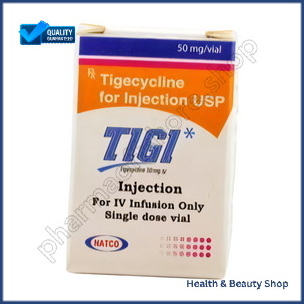
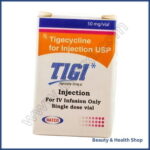
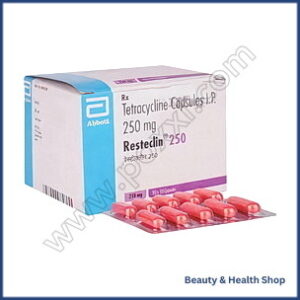
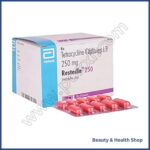
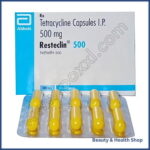
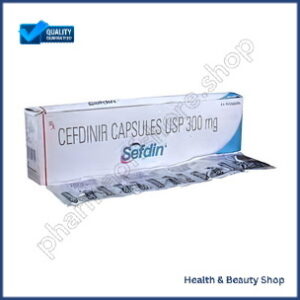
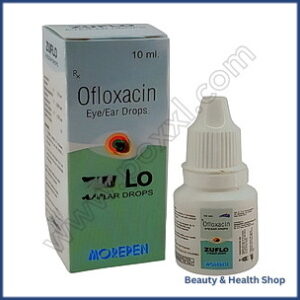
There are no reviews yet.